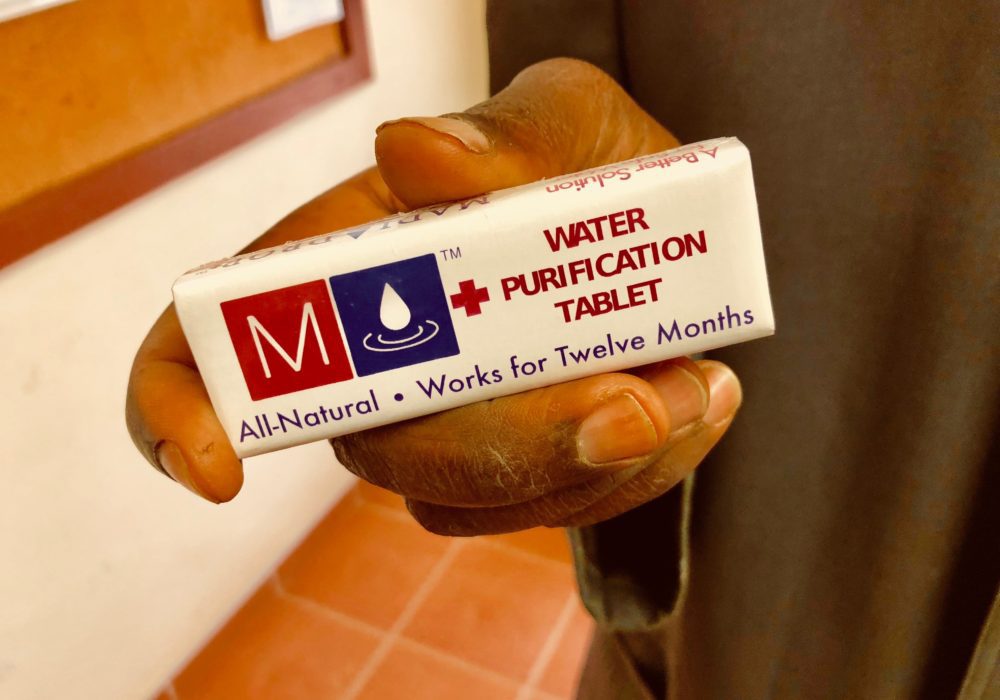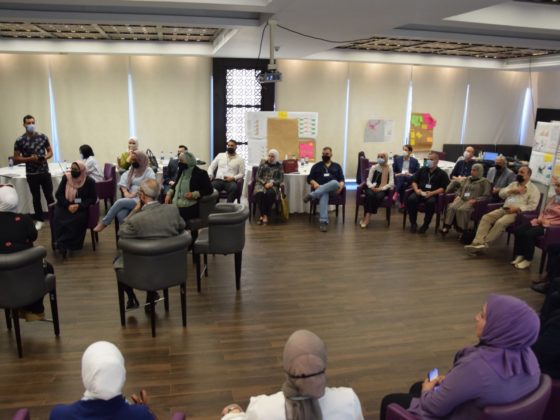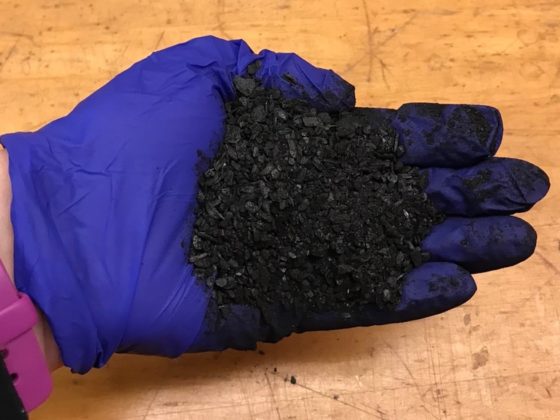The World Health Organization (WHO) estimates that consumption of unsafe water causes the deaths of over 4 million people per year. More than 1 million of these deaths are to children under the age of 5. Not included in this figure are the added health burdens on children who experience cognitive impairment and growth stunting as a result of gastrointestinal infections caused by consumption of water with pathogenic organisms like Shigella, pathogenic strains of Escherichia coli (E. coli), Vibrio cholerae, and Cryptosporidium parvum (Dillingham et al., 2004). People living with AIDS are particularly susceptible to infections from waterborne pathogens because of their weakened immune systems (Samie et al., 2009). In many parts of the developing world, there is an unfortunate confluence of low-quality drinking water and high rates of HIV infection.
The World Health Organization has suggested that one possible problem solution pathway is to take a decentralized approach to water treatment, wherein people treat their water in their households right before they consume it (Clasen et al. 2007). A recent review of the literature sponsored by the WHO concludes that simple, socially acceptable, and low-cost interventions at the household (point-of-use) and community level have the potential to significantly improve the microbial quality of household water and reduce the risk of diarrheal disease and death, particularly among children (Clasen et al. 2007). Point-of-use (POU) water treatment can negate the adverse health effects of low-quality source water and problems of recontamination during transport and storage. Furthermore, local markets can ideally drive the proliferation of these technologies without reliance on government interventions and/or subsidies, making the approach economically sustainable.
Development of POU technologies is an extremely difficult design problem. To be successful, the design(s) must first and foremost be technologically effective. They must be robust and capable of functioning under a wide variety of water chemistries. They must be inexpensive, extremely simple to use, and socially acceptable to the end user.
At the University of Virginia, we have developed a new point-of-use technology that meets the above-described design criteria. This technology has moved from our research laboratories to a commercial product called the MadiDrop+ (www.madidrop.com) (Figure 1).
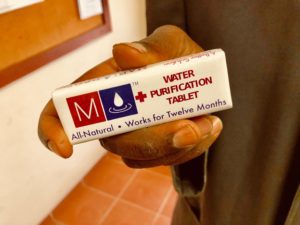
The MadiDrop+ (see Figure above) is a novel, point-of-use (e.g. household-level) water treatment technology. It is a ceramic tablet infused with metallic silver. The tablet is placed in a water storage container and 10-20 liters of water is added to the container at night. The next morning, the water is safe to drink. When submerged in water, the MadiDrop+ releases silver ions to a level that is highly effective at disinfecting waterborne pathogens and mosquito larvae, but well below the drinking water standard for silver set by the U.S. Environmental Protection Agency and the World Health Organization. A single MadiDrop+ works the same way day after day for a total of 12 months, treating more than 7000 liters of water per year. This correlates to a cost of $0.0008-$0.002 per liter of water treated (based on current wholesale to retail price). The MadiDrop+ does not change the taste, odor, or appearance of the water. It is durable, inexpensive to transport, and has a perpetual shelf life, making it ideal for disaster relief applications. MadiDrops and MadiDrops+ are now being used in 43 countries on over 200 unique projects (see Figure 2 below), providing safe water for more than 200,000 people. It is certified for household water treatment by NSF International (www.nsf.org).
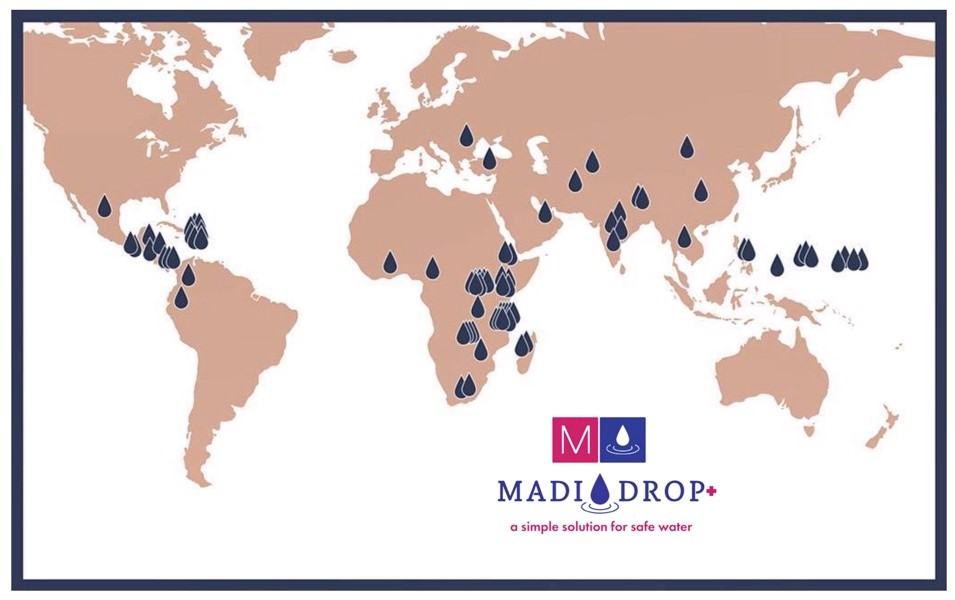
The MadiDrop technology was developed and originally tested by Dr. James A. Smith and two of his doctoral students (Beeta Ehdaie and Carly Krause) in the Department of Civil and Environmental Engineering at the University of Virginia (Ehdaie et al. 2014). Research led by the University of Virginia on this technology includes three field studies involving school children and families in rural South Africa and Tanzania (Ehdaie et al. 2017; Kahler et al. 2017). The MadiDrop+ is named after the Tshivenda word for water, “madi.” Tshivenda is spoken in the Venda region of South Africa and is the location of much of our early field testing of this technology. Venda was one of the South African Homelands under the apartheid regime. In 2018, The MadiDrop+ technology was licensed by the University of Virginia to Silivhere Technologies, who currently manufactures and sells the MadiDrop+
The UVA research on the MadiDrop+ and other point-of-use water treatment technologies is continuing as the team works to identify new and more effective silver- and copper-ion delivery mechanisms to household water and to better understand their effects on different waterborne pathogens (Ehdaie et al. 2019; Jackson et al. 2019). Included in this research are ways to make the technologies accessible to the global poor to improve water quality, human health, and quality of life.
James A. Smith, Henry J. Kinnier Professor of Civil Engineering, Department of Engineering Systems and Environment, University of Virginia. His research focuses on water quality and water purification.
References
Clasen, T., L. Haller, D. Walker, J. Bartram and S. Cairncross (2007). “Cost-effectiveness of water quality interventions for preventing diarrhoeal disease in developing countries.” Journal of Water and Health 5: 599.
Dillingham, R. and R.L. Guerrant, Childhood stunting: measuring and stemming the staggering costs of inadequate water and sanitation. The Lancet, 2004. 363: p. 94-95.
Ehdaie, B., C. Krause and J. A. Smith, 2014, Porous ceramic tablet embedded with silver nanopatches for low-cost point-of-use water purification: Environmental Science & Technology: 10.1021/es503534c.
Ehdaie B, Rento CT, Son V, Turner SS, Samie A, Dillingham RA, and Smith, J.A. (2017) Evaluation of a Silver-Embedded Ceramic Tablet as a Primary and Secondary Point-of-Use Water Purification Technology in Limpopo Province, S. Africa. PLOS ONE 12(1): e0169502. doi:10.1371/journal.pone.0169502
Ehdaie, B., Su, Y.-H., Swami, N.S., and Smith, J.A., 2019, Protozoa and virus disinfection by silver-and copper-embedded ceramic tablets for water purification: Journal of Environmental Engineering, in press.
Jackson, K.N., Kahler, D.M., Kucharska, I., Rekosh, D., Hammarskjold, M.-L., and Smith, J.A., 2019, Inactivation of MS2 Bacteriophage and Adenovirus with Silver and Copper in Solution and Embedded in Ceramic Water Filters: Journal of Environmental Engineering, in press.
Kahler, D.M., Koermer, N.T., Reichl, A.R., Samie, A., and Smith, J.A., 2016, Performance and acceptance of novel silver-impregnated ceramic cubes for drinking water treatment in two field sites: Limpopo Province, South Africa and Dodoma region, Tanzania: Water, v. 8, no. 3, doi: 10.3390/w8030095.
Samie A, Guerrant RL, Barrett L, Bessong PO, Igumbor EO, Obi CL (2009). Prevalence of intestinal parasitic and bacterial pathogens in diarrhoeal and non-diarroeal human stools from Vhembe district, South Africa. J Health Popul Nutr. 27(6):739-45.

